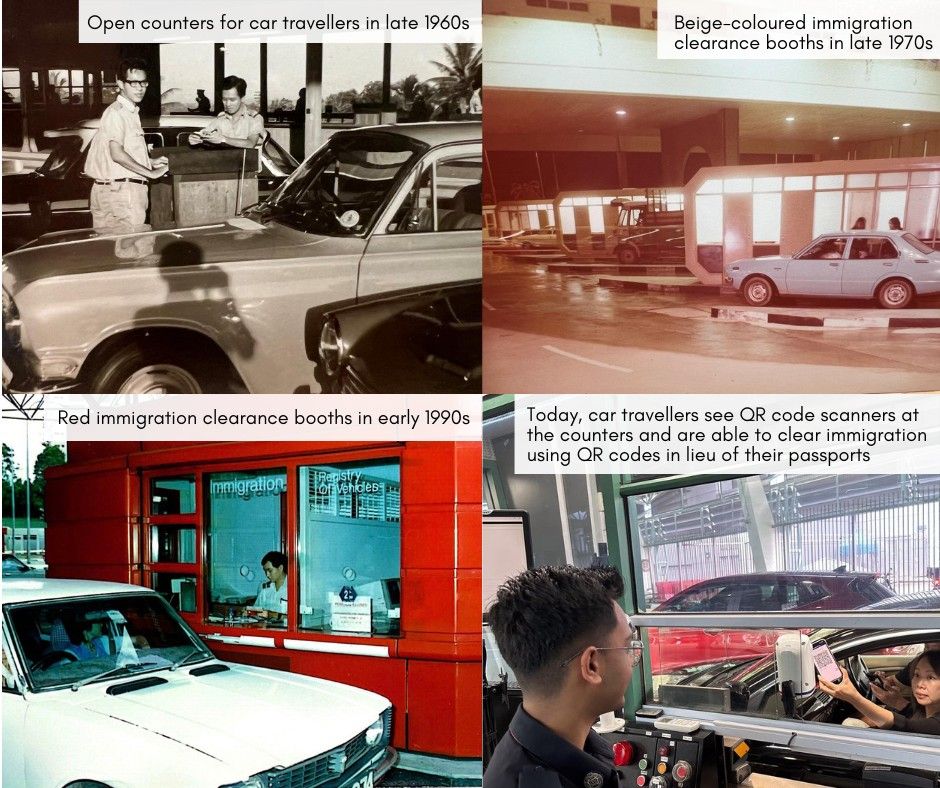Woodlands Checkpoint

📷: A collage of how immigration clearance for car travellers have evolved over the years (Credits to: Immigration & Checkpoints Authority)
#TIL the Woodlands Checkpoint (WCP) opened in 1999 and is into its 25th year of operations now. One of three land checkpoints in Singapore (the other two being the Tuas Checkpoint and the Woodlands Train Checkpoint), the WCP has been a crucial link for commuters and goods traveling between Singapore and Malaysia, serving as the primary land crossing between the two nations. Thousands of people, including workers, students, and tourists pass through the WCP daily.
The WCP is ‘notorious’ for its chronic congestion. Compared to about 230,000 travellers daily in 2000, the daily traveller volume has increased to about 300,000 daily today, with this number often going higher during long weekends and holidays. By 2050, the number of travellers passing through WCP is projected to reach 400,000 a day!
Over the years, there have been various efforts to increase efficiency and experience of immigration clearance without compromising the security of our borders. However, there are inherent constraints such as limited space and infrastructure to address the persistent traffic congestion. As such, the WCP will be undergoing a 10 to 15-year long redevelopment from 2025, including land reclamation, to ensure a more sustainable and long-term solution to the chronic congestion at this land crossing.
The first phase of the redevelopment, which comprises an extension at the Old Woodlands Town Centre (OWTC) and Bukit Timah Expressway, is expected to start in 2025, and is targeted to be completed progressively from 2028. Following this, the old WCP will be demolished, redeveloped, and integrated with the OWTC extension, which is expected to be fully operational from 2032.
When fully redeveloped, the WCP will be approximately five times the size of the current WCP! One can look forward to reducing average checkpoint clearance time from 60 minutes to 15 minutes during peak periods across all vehicle types!
From manual checks through open counters in 1960s to using QR code technology at self-help counters today, the WCP is a testament of Singapore’s spirit of continuous innovation and forward-thinking culture.

